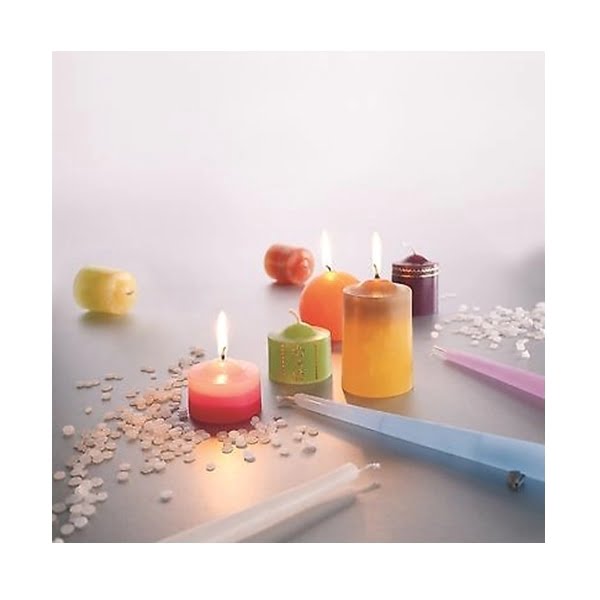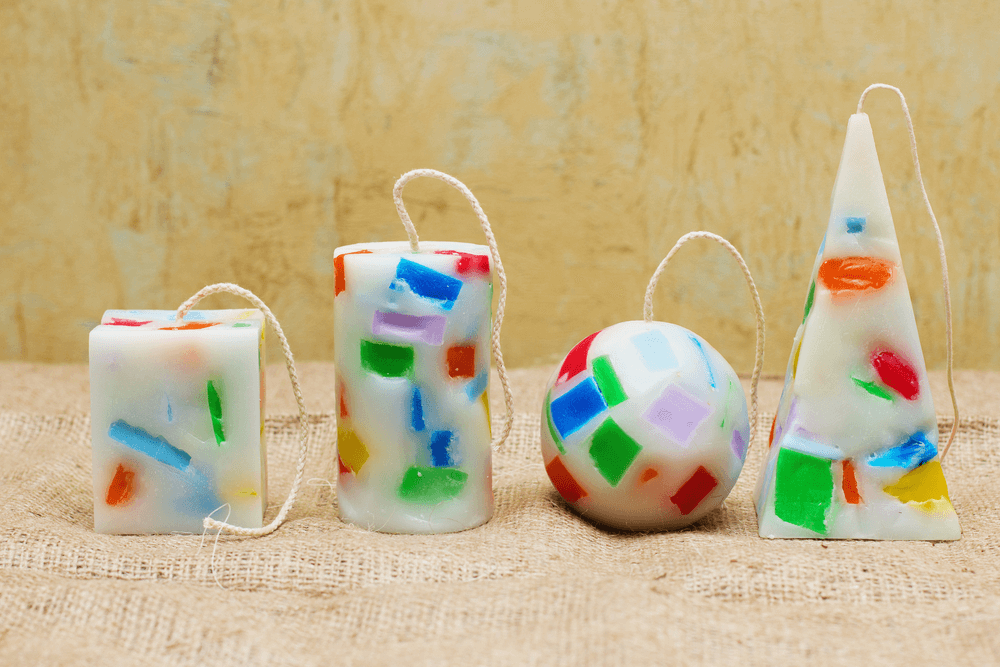Introduction
Soy wax candle making can be a rewarding and enjoyable hobby. Not only is it great for relaxation, but you have the advantage of knowing what’s in your candles, as well as having control over the colors, scents, and aesthetic look of each candle. With careful preparation and attention to detail, you may avoid various common problems that people can face when making soy wax candles.
Common Problems: One common problem with soy wax is that it has a lower melting point than other types of waxes, so it’s more likely to tunnel or curl away from the sides of the container while burning; leading to container rims becoming covered in wax and low burn pools. Generally these problems can be fixed by adding extra fragrance oil so that the taller flame will help melt down the wax across the entire surface area. Additionally, as soy wax cools quickly after pouring you may notice an uneven surface after cooling; bubbling or cracking may occur which can lead to unattractive candles or shorter burn time due to inadequate burn pool size. This can also be solved by adding more fragrance oil which helps slow down the rate at which soy wax cools.
Troubleshooting Tips: If you encounter difficulties while making your soy candles there are some additional troubleshooting tips that may help you address them successfully: Ensure wicks are straight and centered before you light them; avoid overpacking containers with too much wax; keep it dry – moisture causes bubbles to form when reheated or cooled; try using multiple wicks for larger candles to ensure an even burn pool; buy soy blend candle wax if necessary – blends contain additives such as pal hardened or soft paraffin for higher melting points to avoid tunneling and curling; try applying a base coat of color prior to using crayons if difficulty getting desired colors from dye chips occurs. Finally, keep in mind experimenting with different temperature zones will help reduce/avoid issues such as pulling away/bubbling etc., but require different techniques such as heating slowly then letting it cool slowly while stirring intermittently until all fragrances/additives have been added – this allows the fragrances to bond at a different rate throughout each layer resulting in less distortion. By addressing these common problems ahead of time with various techniques and materials available on the market today you should have an easier time creating beautiful soy candles!
Problem
Burn pooling occurs when the soy wax has not been properly melted or a low melting point of wax has been used. As the wax cools, it sets in an uneven way and creates an unstable burn pool with gaps of missing wax.
Solution: To solvw this issue, ensuring the wax is fully melted beforehand before pouring and using the correct container size for each candle helps reduce the chances of uneven surfaces after pouring. When melting, take note of what simmering points are set on your candle warmer as some may melt too quickly causing the hot wax to ‘burn’ its surface as it cools from over-loosening of structures. Lastly, using a good quality mould with even walls helps contribute to an evenly burnt strong pool.
Problem
One of the most common problems when making soy wax candles is tunneling down the wick. Tunneling occurs when the candle fails to create an even, complete melt pool, usually resulting in a small path, or “tunnel,” that goes down the middle of the candle. This can be incredibly frustrating, especially after spending time and energy carefully creating a beautiful candle.
To prevent tunneling, it’s important to use a high-quality soy wax that has been designed specifically for container candles and poured at a temperature slightly hotter than your ideal pour point. The heat from pouring helps to ensure good adhesion to the glass as it starts to cool. Additionally, make sure you use a large enough wick for your container size”it’s best to error on the side of caution with wick sizing because smaller wicks may not provide enough heat for a full melt pool formation. Additionally, be sure to keep your wicks trimmed before each use to ensure proper burning. Finally, if you already experience tunneling down your candle during burning, quickly break up the tunnel by blowing out and relighting the candle once or twice until an even pool is established”this should fix any issues with tunneling over time.
Problem
One of the more common problems with soy wax candle making is poor fragrance performance. This can be caused by a variety of factors and should be addressed in order to produce high-quality candles.
One way to address this problem is to use fragrance oils specifically designed for soy wax. Many leading candle makers create fragrances that focus specifically on soy wax, taking into account its unique properties. By using these specialised fragrances, you can ensure a higher quality product with a stronger scent throw.
Another avenue to explore when experimenting with fragrance is the ratio of oil to wax used in your recipe. Fragrance oils generally require between 6-10% of your total batch weight, however if you find that your candles don’t seem to be bringing out enough fragrance it may require increasing this ratio above 10%. Adding additional oil may bring out more of the desired scent and contribute to better scent throw throughout the entire burn period.
Finally, make sure you are using only high-quality, fresh ingredients when making your candles as older ingredients tend to dilute and weaken the fragrance throw significantly over time. Quality control is essential in order for a candle company’s products to remain consistent, so pay attention not just to the type of wax but also the oils themselves that are used within each product range.
Problem
One of the most common problems when making soy wax candles is wax curdling after the pour. This issue can arise due to several different factors, including overheating of the wax, poor temperature regulation during pouring, and inadequate mixing of ingredients. The best remedy is to start by ensuring that the correct temperatures are maintained throughout your candle-making process. Be sure to use a digital thermometer to monitor both your melting point as well as the cooling rate of your wax as it pours into your container or molds. Make adjustments accordingly until you find a comfortable balance. Ensure that materials have been thoroughly mixed together at the appropriate temperatures before attempting to pour them into your candle containers or molds. If all else fails, you may need to add additional scent, dye or stabilizers in order to help keep the wax smooth and even once cooled. If so, make sure these ingredients are weighed carefully on an accurate scale as too much or too little can negatively affect your finished product.
Problem
When it comes to candle making, one of the most common problems associated with soy wax candles is over-saturating fragrance. Adding too much fragrance or essential oils can prevent your candles from burning cleanly, and can even lead to smoke and soot accumulation. This not only detracts from the overall appearance of your candle but also presents a potentially dangerous situation when burning the candle.
To avoid this problem, there are some techniques you should keep in mind when adding fragrance to your soy wax candles. First off, be sure to only use fragrance oils and essential oils that are specifically designed for use in candle making. Second, measure out and add no more than 1/2 ounce of oil for each pound of wax used in your recipe. The majority of recommendations suggest a ratio between 1:4 (oil:wax) up to a maximum amount of 1:10 (oil:wax). You may want to consider testing small batches with various amounts of oil before adding it to the entire batch of candles you intend to make. Third, always stir your melted wax mixture long enough until the scent is evenly distributed throughout the batter. Speaking from experience, this can take upwards of 8 minutes! Finally, after temperatures have dropped slightly in relation to optimal pouring temperature and better scent retention, pour your mixture into molds quickly and promptly so as not to lose any existing scent that had been blended into the wax during stirring.
Problem
A common issue that many soy wax candle makers run into is a diminished scent after burning the candles. This can be very frustrating to anyone who wishes to provide a pleasant aroma and experience for their customers. The causes of this can be a variety of things, such as an incorrect wick size or the oils used having too low of fragrance level.
To avoid this loss of scent, it is important to use proper wick sizing for your soy wax candles. Too large of a wick will cause the candle to burn too quickly and allow much of the fragrance to escape without being completely enjoyed by those in the room. It is also important to use quality essential oils or fragrance oils with your candles as using oil with too low of a scent level may not fully emit the aroma at desired levels. Finally, for optimum effect, make sure you add enough scented oil when making your candles so that plenty of fragrance will be released when lit up!
Conclusion
Soy wax candles are a popular choice for both experienced and novice candle makers. While soy wax is thought to be easy to use, there are a few common problems that can occur when making these candles. With the right techniques and know-how, however, most of these issues can be avoided. In conclusion, here are some of the tips for avoiding soy wax candle making problems:
1. Use the correct type of wick: Choosing an appropriate size wick is essential to ensure that your candle burns efficiently and cleanly. If you are unsure as to which size wick to use with your particular soy wax combination or candle pot size then consider purchasing pre-waxed wicks that have already been designed specifically for the product being used.
2. Avoid turbulent air currents in the room where you are burning your candles: Make sure you keep any fan or vent in your workspace turned off while making and burning soy candles as this can affect how quickly the flame’s heat is distributed throughout the area thus causing an uneven burn on the surface of your candle. This will result in soot production as well as excessive bubbling in certain areas of your soy wax container.
3. Heat your soy wax correctly before pouring it into its container: When melting your soy wax prior to pouring it into its desired container, make sure not to overheat it beyond its optimal temperature range (not higher than 140 degrees Fahrenheit) which can cause discoloration, cracking, crystallization and poor adhesion of wicking cores or fragrance oils added previously during preparation stages. Finally do not leave molten wax sitting unattended while cooling as it may become too cold leading to improper curing during its solidification phase resulting in difficulties with handling or achieveing desired characteristics after completion of the product such as scent throw strength due lack of proper emulsification upon dispersal into atmosphere!

Welcome to my candle making blog! In this blog, I will be sharing my tips and tricks for making candles. I will also be sharing some of my favorite recipes.




